Discover eight countries and numerous World Heritage sites as you follow the fabled Danube River between Bulgaria and Bavaria. Explore medieval towns and world-class cities, enjoy wine tastings in Croatia and Austria, and bookend your voyage with stays in Prague and Sofia.
A Danube River Cruise
Featuring Stays in Sofia and Prague
15-16 days from $6,790
Discover eight countries and numerous World Heritage sites as you follow the fabled Danube River between Bulgaria and Bavaria. Explore medieval towns and world-class cities, enjoy wine tastings in Croatia and Austria, and bookend your voyage with stays in Prague and Sofia.
Tour Details
TOUR BROCHURE
brochureWHAT OUR TRAVELERS SAY
- Eleanor C.Organization and execution of our trip with Smithsonian Journeys was excellent from first contact to farewell.
- Lynn, S.Our river cruise with Smithsonian Journeys combined comfort and convenience and was an excellent way to get a taste of the history and culture of Eastern Europe.
JOURNEYS DISPATCHES
SPECIAL OFFER
Save $250 per person when you book by June 7, 2024!
No Single Supplement for solo travelers! (Limited availability, book early to ensure your space)
Special Air Rates & Services: As part of our special air program, FlexAir, available with this tour, you can choose from a wide variety of flight options. Visit the Tour Details tab and click on "Special Air Rates/Services" drop down.
Overview
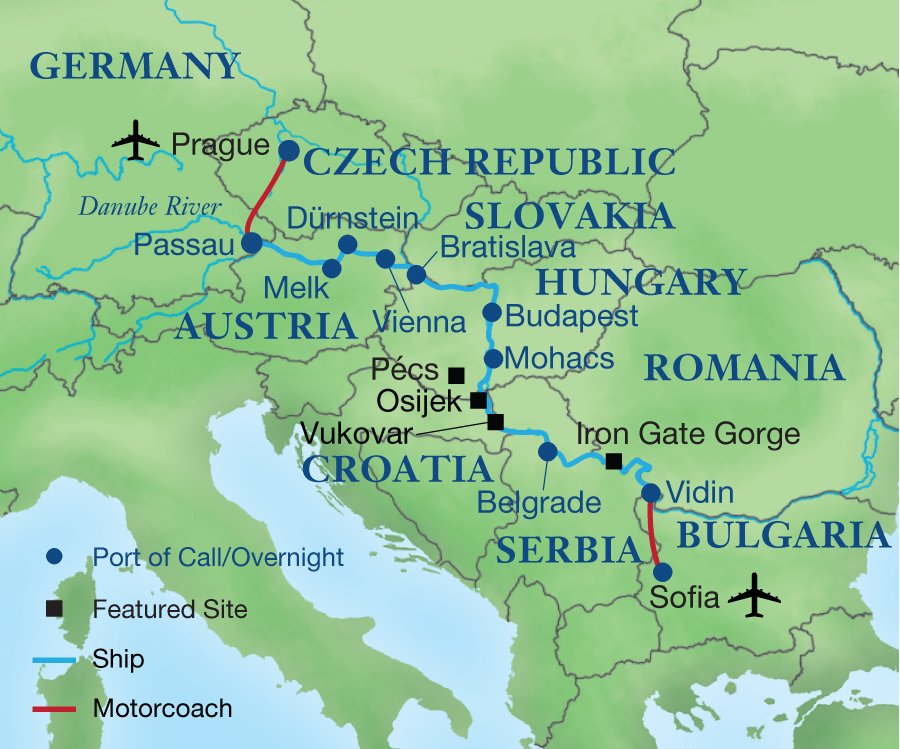
The Danube River flows through the evocative landscapes of Central Europe, linking centuries-old capitals and timeless villages, and curving past magnificent churches, palaces, and castles. Experience eight countries and numerous World Heritage sites as you cruise through history, choosing excursions that pique your interest. Explore charming medieval towns as well as the world-class cities of Budapest and Vienna, enjoy wine tastings in Croatia and Austria, and bookend your voyage with hotel stays in Sofia and Prague.
Highlights Include
- Czech Republic: Begin or end your voyage with a three-night stay in Prague. Set off on tours of Charles Bridge and the historic district; and choose to visit Lobkowicz Palace, take a guided walk through the Jewish Quarter, or tour Prague’s architectural treasures. Enjoy time at leisure to discover this enchanting city as you wish.
- Germany: Discover the Bavarian city of Passau, beautifully situated at the confluence of three rivers—the Danube, Inn, and Ilz. On a visit to the historic center, see the Old Town Hall and the Veste Oberhaus, and venture into St. Stephen’s Cathedral to see Europe's largest pipe organ.
- Austria and the Wachau Valley: Sail through the stunning Wachau Valley, a World Heritage site, stopping to visit the Benedictine abbey at Melk andthe lovely Dürnstein. Ride bikes along the Danube, or visit a local winery for a tasting. In Vienna, tour the lavish Imperial Apartments of the Hofburg Palace or the Habsburg's summer resident the incredible Schönbrunn Palace, or Klosterneuburg Monastery, and an evening dedicated to the Viennese waltz.
- Slovakia: Get acquainted with the history and architecture of Bratislava, Slovakia's capital city, once perched on the Iron Curtain. View St. Michael’s Gate and the Primate’s Palace during a walking tour, bike along the storied Slovak-Austrian border, or trace the footsteps of renowned composers who once lived here, inclduing Liszt and Beethoven.
- Hungary: Cruise into the heart of Budapest, one of Europe’s most striking capitals, poised along the banks of the Danube. Visit the Great Market Hall, discover the poignant sites of the old Jewish Quarter, or explore both the Buda and the Pest sections of the city. Sail past the city's illuminated monuments on a nighttime cruise, and visit the town of Pécs to see its Roman ruins and Ottoman mosques.
- Croatia: Sample Croatian specialities and learn about rural culture in the small village of Kopačevo. Visit the fortress in Osijek and admire the baroque architecture of Vukovar.
- Serbia: Explore the history of Yugoslavia and the state of modern Serbia in Belgrade, and choose to visit the Nikola Tesla Museum; take a culinary tour; or see the city highlights, including Kalemegdan Citadel.
- Bulgaria: Visit the historic port town of Vidin and spend two nights in central Sofia, discovering the eclectic nature of this often-overlooked city, where Ottoman, Slavic, and Soviet influences intermingle. Learn about its history and culture on a panoramic tour featuring the Royal Palace and Battenberg Square.
- Small Ship Experience: The May 2024 departures will be aboard the Amadeus Silver III. The August 2024 cruise will operate aboard the new Amadeus Riva, and the October 2024 and 2025 cruises will sail aboard the Amadeus Queen. The May and August 2025 departures will be aboard the Amadeus Nova. Please note that the direction of the cruise varies depending on departure date and is outlined under the Itinerary section below. These upscale small river ships feature sophisticated staterooms and public spaces, superb amenities, excellent cuisine, and an informal ambiance. See more information about the ships on the Tour Details page. Each voyage will also host other leading cultural and educational institutions, which adds new perspectives and energy to the experience.
- Eleanor C.Organization and execution of our trip with Smithsonian Journeys was excellent from first contact to farewell.
- Lynn, S.Our river cruise with Smithsonian Journeys combined comfort and convenience and was an excellent way to get a taste of the history and culture of Eastern Europe.
To see itinerary, please click on an option below.
2024 - Prague to Sofia - May 18-June 1 & October 6-20
Day 1 — Depart the U.S. for Prague, Czech Republic
Depart the U.S. on an overnight flight to Prague.
Day 2 — Prague
Upon arrival in Prague, transfer to your historic hotel in the city center. After time to get settled, the balance of the day is free of planned activities. Your Smithsonian Journeys Travel Director will be available with suggestions for tours, restaurants, and independent activities. This evening, meet your fellow Smithsonian Journeys travelers for a festive welcome reception at the hotel. (R)
Day 3 — Prague
After breakfast at the hotel, set out on a guided tour of Prague’s historic center. Stroll the Old Town Square, admiring its many architectural styles, and see the famed Astronomical Clock, which dates back to 1410 and marks the hour with a procession of the twelve apostles. Walk across the iconic Charles Bridge, built in 1357 and lined with 30 statues. After a free afternoon to discover Prague as you wish, gather for a specially arranged beer tasting. (B)
Day 4 — Prague
Spend another day getting acquainted with Prague, and enjoy one of the following included excursions:
Prague Castle: Explore the vast Prague Castle complex, including St. Vitus Cathedral and the Golden Lane. At Lobkowicz Palace and Museum: View an incredible collection of Central European art and artifacts housed within a 16th-century palace. Take in panoramic views of the city and enjoy an audio tour of highlights of the collection, amassed over 700 years.
Prague Jewish Quarter: Walk through Josefov, the old Jewish Ghetto on Parizska Street, and visit the Prague National Jewish Museum, which was founded in 1906 and endured turbulent times under the Nazi and Communist regimes. Today, it is a remarkable showcase of Jewish history and religious treasures with collections displayed in six synagogues.
Art Nouveau and Cubist Walking Tour: Discover the highlights of Prague’s remarkable 20th-century architecture on a guided walking tour that highlights art nouveau and cubist landmarks. There’s time this afternoon to continue exploring on your own.
Take advantage of an afternoon at leisure to pursue your own interests. Then enjoy a memorable dinner inside the Municipal House, one of the city's Art Nouveau architectural masterpieces. (B,D)
Day 5 — Passau, Germany
A morning drive brings you through the southern Czech countryside and into Bavaria, Germany, with a rest stop en route. Arrive in the port town of Passau, situated at the confluence of three rivers: the Danube, Inn, and Ilz. Board the Amadeus Star or the Amadeus Silver III and enjoy a light lunch and a chance to settle into your stateroom. Gather for an afternoon walking tour of this picturesque town, including the Veste Oberhaus fortress; the Old Town Hall; Niedernburg Abbey; and St. Stephen’s Cathedral, home to Europe’s largest pipe organ.
This evening, join fellow travelers to toast your eight-night Danube River adventure during a welcome reception followed by dinner on board. (B,L,R,D)
Day 6 — Austria's Wachau Valley
Enter Austria’s spectacular Wachau Valley, a World Heritage site of picturesque villages nestled among vineyard-covered hills and cliff-top castles. Visit Melk Abbey, a masterpiece of baroque architecture with remarkable views overlooking the Danube. Continue through Wachau Valley to Dürnstein and choose from the following included afternoon excursions:
Dürnstein Walking Tour: Trace the tale of Richard I of England, otherwise known as Richard the Lionheart, who was held prisoner in Dürnstein Castle on his way back to England from the Crusades. Also visit the blue-and-white baroque Stiftskirche.
Bicycling the Danube: Ride a bike along the Danube, passing local vineyards and enjoying a break for refreshments along the way. The route is approximately 12 miles roundtrip and includes a visit to the village of Krems.
Wachau Valley Wines: Take a tour of a local winery and sample some of the wines of the Wachau Valley.
Return to the ship in the afternoon. (B,L,D)
Day 7 — Vienna
This morning, a local expert joins the group for an introductory talk on Vienna. You’ll then have your choice of the following shore excursions:
Imperial Vienna: On a tour of the city’s historic center, visit the ornate Hofburg Palace, drive the Ringstrasse, and see the Burgtheater and the Opera House as well as other important sites associated with Austrian culture and government.
Klosterneuburg Monastery and Wine Cellar: Enjoy a guided tour of this impressive Augustinian monastery complex, founded in 1114 by Saint Leopold III, the patron saint of Austria. Descend into wine cellars that date back to the medieval and baroque periods, and enjoy a tasting of the splendid wine produced here at Austria's oldest wine estate.
Schönbrunn Palace: Marvel at this remarkable summer palace and residence of the Habsburgs, a World Heritage site. Visit the opulent State Apartments and stunning gardens.
Enjoy free time to explore Vienna in the afternoon. A shuttle service will be provided between the ship and the city center. After dinner on board the ship, take part in an exclusive waltz performance and lesson accompanied by classical musicians. (B,L,D)
Day 8 — Bratislava, Slovakia
Meet your fellow Smithsonian Journeys travelers and your expert in the Smithsonian Journeys Travelers Corner for an informal discussion about the history and culture you’ve encountered so far. Then enjoy a presentation by a local speaker on the Velvet Revolution. Go ashore in Bratislava later this morning and set out on one of the following excursions.
Bratislava Old Town and Cafe: Delve into the political, social, and cultural life of the Slovak Republic on a walking tour of Bratislava and its architectural gems. See St. Martin’s Cathedral and the National Theater, and view St. Michael's Gate, the only remaining part of the city’s medieval fortifications. Visit the 16th-century Primate’s Palace, former winter residence of the Bishops of Esztergom. Stop in a favorite local café to sample local pastries with coffee or tea.
Bratislava Old Town and Music: In Bratislava, the composer Hummel was born, Liszt started his career, Bartok went to school, Beethoven taught, and Haydn worked. On a special tour of the quaint Old Town, focus on this vibrant musical heritage, visiting venues associated with these famous composers. End the tour with a violin recital at a historic palace.
Iron Curtain Bike Tour: Bratislava is the only city of the former Eastern Bloc located directly on the Iron Curtain. On a two-hour bike tour, ride along both sides of the Danube, discovering sites that illustrate 20th-century history—including a preserved World War II bunker built for protection against the Nazis.
Return to the ship in the afternoon. (B,L,D)
Day 9 — Budapest, Hungary
The Danube splits this magnificent capital into its two original cities: charming Buda, with winding, leafy streets and a hilltop castle; and Pest, known for its grand squares and boulevards and majestic architecture. Spend the day immersed in the culture and charisma of this World Heritage site on the excursion of your choice.
Highlights of Budapest: Explore both Buda and Pest on a guided tour of the city’s main sites. In Pest, stroll through Heroes Square and admire the architectural details of the opulent Opera House and the famous Parliament Building. Continue to Pest for a walk through the old Castle District, where you’ll visit Matthias Church, site of many Habsburg coronations, and Fisherman's Bastion.
Living Local: Venture into the Great Market and stop at a coffee house to see how the city’s famous strudel is made. Sample a piece of strudel with a coffee or tea, and end your excursion with a tasting ofpálinka, a local schnapps.
Budapest’s Jewish Quarter: Take a walk through the Old Jewish Quarter, and view the Great Synagogue and the Emmanuel Tree, a Holocaust memorial. See the evocative Shoes on the Danube Memorial, which marks the spot where Hungarian Nazis executed Jews in the winter of 1944-45. The tour includes a visit to the Páva Street Synagogue and the Holocaust Memorial Center.
Take advantage of a free afternoon to explore the city on your own. After dark, see the dazzling lights of Budapest on an evening cruise on the Danube past the dramatically illuminated Parliament and other landmarks. (B,L,D)
Day 10 — Mohacs and Pécs /Osijek and Vukovar, Croatia
Dock in Mohacs and set off on a full-day excursion, beginning in the town of Pécs. On a walking tour, see Roman ruins and Ottoman mosques that have been converted to Christian churches.
After lunch at a local restaurant, cross into Croatia and pay a visit to the village of Kopačevo, established in the 13th century. Here, learn about the traditions of the region and try local specialties including sljivovica, a fruit brandy. Travel on to Osijek, the largest town in eastern Croatia, situated at the confluence of the Danube and the Drava River. Take a guided walk through the historic center and visit Tvrda Fortress, a fascinating example of centuries-old urban planning.
Cap off your excursion with an overview tour of the baroque town of Vukovar, heavily damaged during the collapse of Yugoslavia in the 1990s and nearly fully restored to its original beauty. (B,L,D)
Day 11 — Belgrade, Serbia
Begin the day with a presentation by a local expert on the state of modern Serbia. Later, discover Belgrade and Serbian culture on your choice of included shore excursions.
Belgrade City Highlights: Discover “the White City” on a guided tour, taking in views of the city’s main streets and visiting the remarkable Church of St. Sava. Ascend to the Kalemegdan Citadel, which dominates the confluence of the Danube and Sava Rivers and evokes many centuries of Serbian history, from the Celtic era to the present day.
Eating Like a Local: Explore the Serbian culinary scene during a tour that showcases local culture through food traditions. Sip morning coffee and watch the city wake up. Learn about the history and customs that have influenced today’s food culture, and try rakija, a local brandy, at a distillery. End the tour with tasting of Serbian specialties.
Nikola Tesla Museum: Trace the life and work of Serbia’s most famous scientist on a tour of a museum, science center, and memorial dedicated to Nikola Tesla.
During an afternoon at leisure, a shuttle will be available to transport you between the ship and the city center. After dinner, enjoy a performance of Serbian folk dancing. (B,L,D)
Day 12 — Iron Gate Gorge
Follow the Danube along the Serbian-Romanian border and through the Iron Gate, a series of dramatic gorges and locks where the Danube is squeezed to its narrowest point. Head to the sun deck for a typical Balkan snack as you take in the scenery. There will also be an opportunity to meet in the Smithsonian Journeys Travelers Corner for informal discussions about the places you’ve visited along the Danube. This evening, toast your river voyage during a farewell reception and dinner on board. (B,L,R,D)
Day 13 — Vidin and Sofia, Bulgaria
Cruise into Bulgaria and disembark in Vidin, one of the Danube’s oldest riverside towns, located across the river from Romania. Set off on a tour of the ninth-century Baba Vida fortress as well as the town’s Ottoman sites. After lunch at a local restaurant, drive to Sofia where the balance of the day is at leisure. This evening, gather for an exclusive Smithsonian Journeys reception. (B,L,R)
Day 14 — Sofia
Delve into Bulgaria’s history during a morning talk by a local expert. Then embark on a tour of the city center, where Ottoman, Slavic, and Soviet influence is still evident. See the ruins of Serdica, an ancient Roman town accidentally discovered during the construction of a hotel in 2004. Visit St. George Rotunda and Alexander Batenberg Square with its Royal Palace, and admire the domed architecture of Alexander Nevsky Cathedral.
Enjoy a final afternoon at leisure to get to know Sofia on your own. Gather tonight for a farewell reception and dinner at the hotel. (B,R,D)
Day 15 — Depart for U.S.
Depart the hotel for Sofia International Airport and for return flights to the U.S. (B)
Included meals are denoted as follows: Breakfast (B), Lunch (L), Reception (R), Dinner (D)
2024 - Sofia to Prague - May 27-June 11 & August 9-24
Day 1 — Depart the U.S. for Sofia, Bulgaria
Depart the U.S. on an overnight flight to Sofia.
Day 2 — Sofia
Upon arrival in Sofia, transfer to your historic hotel in the city center. After time to get settled, the balance of the day is free of planned activities. Your Smithsonian Journeys Travel Director will be available with suggestions for tours, restaurants, and independent activities. This evening, meet your fellow Smithsonian Journeys travelers for a festive welcome reception at the hotel. (R)
Day 3 — Sofia
Delve into Bulgaria’s history during a morning talk by a local expert. Then embark on a tour of the city center, where Ottoman, Slavic, and Soviet influence is still evident. See the ruins of Serdica, an ancient Roman town accidentally discovered during the construction of a hotel in 2004. Visit St. George Rotunda and Alexander Batenberg Square with its Royal Palace, and admire the domed architecture of Alexander Nevsky Cathedral.
Enjoy an afternoon at leisure to get to know Sofia on your own. This evening gather for a dinner at the hotel. (B,R,D)
Day 4 — Sofia / Vidin
Travel to Vidin, one of the oldest towns on the banks of the Danube, located across the river from Romania. Set off on a tour of the ninth-century Baba Vida fortress as well as the town’s Ottoman sites. Late in the afternoon, embark the ship and settle into your stateroom—your home for the next nine nights. Meet for an onboard welcome reception followed by dinner. (B,L,R,D)
Day 5 — Iron Gate Gorge
Follow the Danube along the Serbian-Romanian border and through the Iron Gate, a series of dramatic gorges and locks where the Danube is squeezed to its narrowest point. Head to the sun deck for a typical Balkan snack as you take in the scenery. There will also be an opportunity to meet in the Smithsonian Journeys Travelers Corner for an informal discussion with your Smithsonian Journeys Expert to learn about the regions you are visiting. (B,L,D)
Day 6 — Belgrade, Serbia
Begin the day with a presentation by a local expert on the state of modern Serbia. Later, discover Belgrade and Serbian culture on your choice of included shore excursions.
Belgrade City Highlights: Discover “the White City” on a guided tour, taking in views of the city’s main streets and visiting the remarkable Church of St. Sava. Ascend to the Kalemegdan Citadel, which dominates the confluence of the Danube and Sava Rivers and evokes many centuries of Serbian history, from the Celtic era to the present day.
Eating Like a Local: Explore the Serbian culinary scene during a tour that showcases local culture through food traditions. Sip morning coffee and watch the city wake up. Learn about the history and customs that have influenced today’s food culture, and try rakija, a local brandy, at a distillery. End the tour with a tasting of Serbian specialties.
Nikola Tesla Museum: Trace the life and work of Serbia’s most famous scientist on a tour of a museum, science center, and memorial dedicated to Nikola Tesla.
During an afternoon at leisure, a shuttle will be available to transport you between the ship and the city center. After dinner, enjoy a performance of Serbian folk dancing. (B,L,D)
Day 7 — Osijek and Vukovar, Croatia
Your visit to Croatia starts off in the village of Kopačevo, established in the 13th century. Here, learn about the traditions of the region and try local specialties including sljivovica, a fruit brandy. Travel on to Osijek, the largest town in eastern Croatia, situated at the confluence of the Danube and the Drava River. Take a guided walk through the historic center and visit Tvrda Fortress, a fascinating example of centuries-old urban planning. Then take a walk through the baroque historic center of Vukovar, heavily damaged during the collapse of Yugoslavia in the 1990s and nearly fully restored to its original beauty. (B,L,D)
Day 8 — Mohacs and Pécs, Hungary
Cross into Hungary and dock in Mohacs. Travel to the historic town of Pécs, home to Roman ruins and Ottoman mosques that have been converted to Christian churches. Visit a local winery for a tasting. Set sail for Budapest this afternoon. (B,L,D)
Day 9 — Budapest
The Danube splits this magnificent capital into its two original cities: charming Buda, with winding, leafy streets and a hilltop castle; and Pest, known for its grand squares and boulevards and majestic architecture. Spend the day immersed in the culture and charisma of this World Heritage site on the excursion of your choice.
Highlights of Budapest: Explore both Buda and Pest on a guided tour of the city’s main sites. In Pest, stroll through Heroes Square and admire the architectural details of the opulent Opera House and the famous Parliament Building. Continue to Pest for a walk through the old Castle District, where you’ll visit Matthias Church, site of many Habsburg coronations, and Fisherman's Bastion.
Living Local: Venture into the Great Market and stop at a coffee house to see how the city’s famous strudel is made. Sample a piece of strudel with a coffee or tea, and end your excursion with a tasting ofpálinka, a local schnapps.
Budapest’s Jewish Quarter: Take a walk through the Old Jewish Quarter, and view the Great Synagogue and the Emmanuel Tree, a Holocaust memorial. See the evocative Shoes on the Danube Memorial, which marks the spot where Hungarian Nazis executed Jews in the winter of 1944-45. The tour includes a visit to the Páva Street Synagogue and the Holocaust Memorial Center.
Take advantage of a free afternoon to explore the city on your own. After dark, see the dazzling lights of Budapest on an evening cruise on the Danube past the dramatically illuminated Parliament and other landmarks. (B,L,D)
Day 10 — Bratislava, Slovakia
Meet your fellow Smithsonian Journeys travelers and your expert in the Smithsonian Journeys Travelers Corner for an informal discussion about the history and culture you’ve encountered so far. Then enjoy a presentation by a local speaker on the Velvet Revolution.
Go ashore in Bratislava later this morning and set out on one of the following excursions.
Bratislava Old Town and Cafe: Delve into the political, social, and cultural life of the Slovak Republic on a walking tour of Bratislava and its architectural gems. See St. Martin’s Cathedral and the National Theater, and view St. Michael's Gate, the only remaining part of the city’s medieval fortifications. Visit the 16th-century Primate’s Palace, former winter residence of the Bishops of Esztergom. Stop in a favorite local café to sample local pastries with coffee or tea.
Bratislava Old Town and Music: In Bratislava, the composer Hummel was born, Liszt started his career, Bartok went to school, Beethoven taught, and Haydn worked. On a special tour of the quaint Old Town, focus on this vibrant musical heritage, visiting venues associated with these famous composers. End the tour with a violin recital at a historic palace.
Iron Curtain Bike Tour: Bratislava is the only city of the former Eastern Bloc located directly on the Iron Curtain. On a two-hour bike tour, ride along both sides of the Danube, discovering sites that illustrate 20th-century history—including a preserved World War II bunker built for protection against the Nazis.
Return to the ship in the afternoon. (B,L,D)
Day 11 — Vienna, Austria
This morning, a local expert joins the group for an introductory talk on Vienna. You’ll then have your choice of the following shore excursions:
Imperial Vienna: On a tour of the city’s historic center, visit the ornate Hofburg Palace, drive the Ringstrasse, and see the Burgtheater and the Opera House as well as other important sites associated with Austrian culture and government.
Klosterneuburg Monastery and Wine Cellar: Enjoy a guided tour of this impressive Augustinian monastery complex, founded in 1114 by Saint Leopold III, the patron saint of Austria. Descend into wine cellars that date back to the medieval and baroque periods, and enjoy a tasting of the splendid wine produced here at Austria's oldest wine estate.
Schönbrunn Palace: Marvel at this remarkable summer palace and residence of the Habsburgs, a World Heritage site. Visit the opulent State Apartments and stunning gardens.
Enjoy free time to explore Vienna in the afternoon. A shuttle service will be provided between the ship and the city center. After dinner on board the ship, take part in an exclusive waltz performance and lesson accompanied by classical musicians. (B,L,D)
Day 12 — Austria's Wachau Valley
Enter Austria’s spectacular Wachau Valley, a World Heritage site of picturesque villages nestled among vineyard-covered hills and cliff-top castles. Dock in Dürnstein and choose from the following included afternoon excursions:
Dürnstein Walking Tour: Trace the tale of Richard I of England, otherwise known as Richard the Lionheart, who was held prisoner in Dürnstein Castle on his way back to England from the Crusades. Also visit the blue-and-white baroque Stiftskirche.
Bicycling the Danube: Ride a bike along the Danube, passing local vineyards and enjoying a break for refreshments along the way. The route is approximately 12 miles roundtrip and includes a visit to the village of Krems.
Wachau Valley Wines: Take a tour of a local winery and sample some of the wines of the Wachau Valley.
This afternoon, visit Melk Abbey, a masterpiece of baroque architecture with remarkable views overlooking the Danube. Back on board, toast your Danube voyage with fellow travelers at a farewell reception followed by dinner. (B,L,R,D)
Day 13 — Passau, Germany/ Prague, Czech Republic
Arrive in the port town of Passau, situated at the confluence of three rivers: the Danube, Inn, and Ilz. During a walking tour of this picturesque town, visit the Veste Oberhaus fortress; the Old Town Hall; Niedernburg Abbey; and St. Stephen’s Cathedral, home to Europe’s largest pipe organ.
Disembark and enjoy a lunch of German specialties at a local restaurant, then drive through the Bavarian countryside and into the Czech Republic, with a rest stop en route. Arrive in Prague and settle into your hotel in the heart of the city. This evening, enjoy a memorable dinner inside the Municipal House, one of the city’s Art Nouveau architectural masterpieces. (B,L,D)
Day 14 — Prague
After breakfast at the hotel, set out on a guided tour of Prague’s historic center. Stroll the Old Town Square, admiring its many architectural styles, and see the famed Astronomical Clock, which dates back to 1410 and marks the hour with a procession of the twelve apostles. Walk across the iconic Charles Bridge, built in 1357 and lined with 30 statues. After a free afternoon to discover Prague as you wish, gather for a specially arranged beer tasting. (B)
Day 15 — Prague
Spend another day getting acquainted with Prague, and enjoy one of the following included excursions:
Prague Castle: Explore the vast Prague Castle complex, including St. Vitus Cathedral and the Golden Lane. At Lobkowicz Palace and Museum, view an incredible collection of Central European art and artifacts housed within a 16th-century palace. Take in panoramic views of the city and enjoy an audio tour of highlights of the collection, amassed over 700 years.
Prague Jewish Quarter: Walk through Josefov, the old Jewish Ghetto on Parizska Street, and visit the Prague National Jewish Museum, which was founded in 1906 and endured turbulent times under the Nazi and Communist regimes. Today, it is a remarkable showcase of Jewish history and religious treasures with collections displayed in six synagogues.
Art Nouveau and Cubist Walking Tour: Discover the highlights of Prague’s remarkable 20th-century architecture on a guided walking tour that highlights art nouveau and cubist landmarks. There’s time this afternoon to continue exploring on your own.
Take advantage of an afternoon at leisure to pursue your own interests. Then celebrate your journey at a festive farewell dinner. (B,D)
Day 16 — Depart for U.S.
Depart the hotel for Prague International Airport in time for your return flights to the U.S. (B)
Included meals are denoted as follows: Breakfast (B), Lunch (L), Reception (R), Dinner (D)
2025 - Prague to Sofia - May 14-28 & October 6-20
Day 1 — Depart the U.S. for Prague, Czech Republic
Depart the U.S. on an overnight flight to Prague.
Day 2 — Prague
Upon arrival in Prague, transfer to your historic hotel in the city center. After time to get settled, the balance of the day is free of planned activities. Your Smithsonian Journeys Travel Director will be available with suggestions for tours, restaurants, and independent activities. This evening, meet your fellow Smithsonian Journeys travelers for a festive welcome reception at the hotel. (R)
Day 3 — Prague
After breakfast at the hotel, set out on a guided tour of Prague’s historic center. Stroll the Old Town Square, admiring its many architectural styles, and see the famed Astronomical Clock, which dates back to 1410 and marks the hour with a procession of the twelve apostles. Walk across the iconic Charles Bridge, built in 1357 and lined with 30 statues. After a free afternoon to discover Prague as you wish, gather for a specially arranged beer tasting. (B)
Day 4 — Prague
Spend another day getting acquainted with Prague, and enjoy one of the following included excursions:
Prague Castle: Explore the vast Prague Castle complex, including St. Vitus Cathedral and the Golden Lane. At Lobkowicz Palace and Museum: View an incredible collection of Central European art and artifacts housed within a 16th-century palace. Take in panoramic views of the city and join a local guide for a highlights tour of the collection, amassed over 700 years.
Prague Jewish Quarter: Walk through Josefov, the old Jewish Ghetto on Parizska Street, and visit the Prague National Jewish Museum, which was founded in 1906 and endured turbulent times under the Nazi and Communist regimes. Today, it is a remarkable showcase of Jewish history and religious treasures with collections displayed in six synagogues.
Art Nouveau and Cubist Walking Tour: Discover the highlights of Prague’s remarkable 20th-century architecture on a guided walking tour that highlights art nouveau and cubist landmarks. There’s time this afternoon to continue exploring on your own.
Take advantage of an afternoon at leisure to pursue your own interests. This evening, enjoy a memorable dinner inside the Municipal House, one of the city’s Art Nouveau architectural masterpieces. (B,D)
Day 5 — Passau, Germany
A morning drive brings you through the southern Czech countryside and into Bavaria, Germany, with a rest stop en route. Arrive in the port town of Passau, situated at the confluence of three rivers: the Danube, Inn, and Ilz. Board the Amadeus Nova (May) or Amadeus Queen (October) and enjoy a light lunch and a chance to settle into your stateroom. Gather for an afternoon walking tour of this picturesque town, including the Veste Oberhaus fortress; the Old Town Hall; Niedernburg Abbey; and St. Stephen’s Cathedral, home to Europe’s largest pipe organ.
This evening, join fellow travelers to toast your eight-night Danube River adventure during a welcome reception followed by dinner on board. (B,L,R,D)
Day 6 — Austria's Wachau Valley
Enter Austria’s spectacular Wachau Valley, a World Heritage site of picturesque villages nestled among vineyard-covered hills and cliff-top castles. Visit Melk Abbey, a masterpiece of baroque architecture with remarkable views overlooking the Danube. Continue through Wachau Valley to Dürnstein and choose from the following included afternoon excursions:
Dürnstein Walking Tour: Trace the tale of Richard I of England, otherwise known as Richard the Lionheart, who was held prisoner in Dürnstein Castle on his way back to England from the Crusades. Also visit the blue-and-white baroque Stiftskirche.
Bicycling the Danube: Ride a bike along the Danube, passing local vineyards and enjoying a break for refreshments along the way. The route is approximately 12 miles roundtrip and includes a visit to the village of Krems.
Wachau Valley Wines: Take a tour of a local winery and sample some of the wines of the Wachau Valley.
Return to the ship in the afternoon. (B,L,D)
Day 7 — Vienna
This morning, a local expert joins the group for an introductory talk on Vienna. You’ll then have your choice of the following shore excursions:
Imperial Vienna: On a tour of the city’s historic center, visit the ornate Hofburg Palace, drive the Ringstrasse, and see the Burgtheater and the Opera House as well as other important sites associated with Austrian culture and government.
Klosterneuburg Monastery and Wine Cellar: Enjoy a guided tour of this impressive Augustinian monastery complex, founded in 1114 by Saint Leopold III, the patron saint of Austria. Descend into wine cellars that date back to the medieval and baroque periods, and enjoy a tasting of the splendid wine produced here at Austria's oldest wine estate.
Schönbrunn Palace: Marvel at this remarkable summer palace and residence of the Habsburgs, a World Heritage site. Visit the opulent State Apartments and stunning gardens.
Enjoy free time to explore Vienna in the afternoon. A shuttle service will be provided between the ship and the city center. After dinner on board the ship, take part in an exclusive waltz performance and lesson accompanied by classical musicians. (B,L,D)
Day 8 — Bratislava, Slovakia
Meet your fellow Smithsonian Journeys travelers and your expert in the Smithsonian Journeys Travelers Corner for an informal discussion about the history and culture you’ve encountered so far. Then enjoy a presentation by a local speaker on the Velvet Revolution.
Go ashore in Bratislava later this morning and set out on one of the following excursions.
Bratislava Old Town and Cafe: Delve into the political, social, and cultural life of the Slovak Republic on a walking tour of Bratislava and its architectural gems. See St. Martin’s Cathedral and the National Theater, and view St. Michael's Gate, the only remaining part of the city’s medieval fortifications. Visit the 16th-century Primate’s Palace, former winter residence of the Bishops of Esztergom. Stop in a favorite local café to sample local pastries with coffee or tea.
Bratislava Old Town and Music: In Bratislava, the composer Hummel was born, Liszt started his career, Bartok went to school, Beethoven taught, and Haydn worked. On a special tour of the quaint Old Town, focus on this vibrant musical heritage, visiting venues associated with these famous composers. End the tour with a violin recital at a historic palace.
Iron Curtain Bike Tour: Bratislava is the only city of the former Eastern Bloc located directly on the Iron Curtain. On a two-hour bike tour, ride along both sides of the Danube, discovering sites that illustrate 20th-century history—including a preserved World War II bunker built for protection against the Nazis.
Return to the ship in the afternoon. (B,L,D)
Day 9 — Budapest, Hungary
The Danube splits this magnificent capital into its two original cities: charming Buda, with winding, leafy streets and a hilltop castle; and Pest, known for its grand squares and boulevards and majestic architecture. Spend the day immersed in the culture and charisma of this World Heritage site on the excursion of your choice.
Highlights of Budapest: Explore both Buda and Pest on a guided tour of the city’s main sites. In Pest, stroll through Heroes Square and admire the architectural details of the opulent Opera House and the famous Parliament Building. Continue to Pest for a walk through the old Castle District, where you’ll visit Matthias Church, site of many Habsburg coronations, and Fisherman's Bastion.
Living Local: Venture into the Great Market and stop at a coffee house to see how the city’s famous strudel is made. Sample a piece of strudel with a coffee or tea, and end your excursion with a tasting ofpálinka, a local schnapps.
Budapest’s Jewish Quarter: Take a walk through the Old Jewish Quarter, and view the Great Synagogue and the Emmanuel Tree, a Holocaust memorial. See the evocative Shoes on the Danube Memorial, which marks the spot where Hungarian Nazis executed Jews in the winter of 1944-45. The tour includes a visit to the Páva Street Synagogue and the Holocaust Memorial Center.
Take advantage of a free afternoon to explore the city on your own. After dark, see the dazzling lights of Budapest on an evening cruise on the Danube past the dramatically illuminated Parliament and other landmarks. (B,L,D)
Day 10 — Mohacs and Pécs /Osijek and Vukovar, Croatia
Dock in Mohacs and set off on a full-day excursion, beginning in the town of Pécs. On a walking tour, see Roman ruins and Ottoman mosques that have been converted to Christian churches.
After lunch at a local restaurant, cross into Croatia and pay a visit to the village of Kopačevo, established in the 13th century. Here, learn about the traditions of the region and try local specialties including sljivovica, a fruit brandy. Travel on to Osijek, the largest town in eastern Croatia, situated at the confluence of the Danube and the Drava River. Take a guided walk through the historic center and visit Tvrda Fortress, a fascinating example of centuries-old urban planning.
Cap off your excursion with an overview tour of the baroque town of Vukovar, heavily damaged during the collapse of Yugoslavia in the 1990s and nearly fully restored to its original beauty. (B,L,D)
Day 11 — Belgrade, Serbia
Begin the day with a presentation by a local expert on the state of modern Serbia. Later, discover Belgrade and Serbian culture on your choice of included shore excursions.
Belgrade City Highlights: Discover “the White City” on a guided tour, taking in views of the city’s main streets and visiting the remarkable Church of St. Sava. Ascend to the Kalemegdan Citadel, which dominates the confluence of the Danube and Sava Rivers and evokes many centuries of Serbian history, from the Celtic era to the present day.
Eating Like a Local: Explore the Serbian culinary scene during a tour that showcases local culture through food traditions. Sip morning coffee and watch the city wake up. Learn about the history and customs that have influenced today’s food culture, and try rakija, a local brandy, at a distillery. End the tour with tasting of Serbian specialties.
Nikola Tesla Museum: Trace the life and work of Serbia’s most famous scientist on a tour of a museum, science center, and memorial dedicated to Nikola Tesla.
During an afternoon at leisure, a shuttle will be available to transport you between the ship and the city center. After dinner, enjoy a performance of Serbian folk dancing. (B,L,D)
Day 12 — Iron Gate Gorge
Follow the Danube along the Serbian-Romanian border and through the Iron Gate, a series of dramatic gorges and locks where the Danube is squeezed to its narrowest point. Head to the sun deck for a typical Balkan snack as you take in the scenery. There will also be an opportunity to meet in the Smithsonian Journeys Travelers Corner for informal discussions about the places you’ve visited along the Danube. This evening, toast your river voyage during a farewell reception and dinner on board. (B,L,R,D)
Day 13 — Vidin and Sofia, Bulgaria
Cruise into Bulgaria and disembark in Vidin, one of the Danube’s oldest riverside towns, located across the river from Romania. Set off on a tour of the ninth-century Baba Vida fortress as well as the town’s Ottoman sites. After lunch at a local restaurant, drive to Sofia where the balance of the day is at leisure. This evening, gather for an exclusive Smithsonian Journeys reception. (B,L,R)
Day 14 — Sofia
Delve into Bulgaria’s history during a morning talk by a local expert. Then embark on a tour of the city center, where Ottoman, Slavic, and Soviet influence is still evident. See the ruins of Serdica, an ancient Roman town accidentally discovered during the construction of a hotel in 2004. Visit St. George Rotunda and Alexander Batenberg Square with its Royal Palace, and admire the domed architecture of Alexander Nevsky Cathedral.
Enjoy a final afternoon at leisure to get to know Sofia on your own. Gather tonight for a farewell reception and dinner at the hotel. (B,R,D)
Day 15 — Depart for U.S.
Depart the hotel for Sofia International Airport for your return flight to the U.S. (B)
Included meals are denoted as follows: Breakfast (B), Lunch (L), Reception (R), Dinner (D)
2025 - Sofia to Prague - May 23 -June 7 & August 24 -September 8
Day 1 — Depart the U.S. for Sofia, Bulgaria
Depart the U.S. on an overnight flight to Sofia.
Day 2 — Sofia
Upon arrival in Sofia, transfer to your historic hotel in the city center. After time to get settled, the balance of the day is free of planned activities. Your Smithsonian Journeys Travel Director will be available with suggestions for tours, restaurants, and independent activities. This evening, meet your fellow Smithsonian Journeys travelers for a festive welcome reception at the hotel. (R)
Day 3 — Sofia
Delve into Bulgaria’s history during a morning talk by a local expert. Then embark on a tour of the city center, where Ottoman, Slavic, and Soviet influence is still evident. See the ruins of Serdica, an ancient Roman town accidentally discovered during the construction of a hotel in 2004. Visit St. George Rotunda and Alexander Batenberg Square with its Royal Palace, and admire the domed architecture of Alexander Nevsky Cathedral.
Enjoy an afternoon at leisure to get to know Sofia on your own. This evening gather for a dinner at the hotel. (B,R,D)
Day 4 — Sofia / Vidin
Travel to Vidin, one of the oldest towns on the banks of the Danube, located across the river from Romania. Set off on a tour of the ninth-century Baba Vida fortress as well as the town’s Ottoman sites. Late in the afternoon, embark the ship and settle into your stateroom—your home for the next nine nights. Meet for an onboard welcome reception followed by dinner. (B,L,R,D)
Day 5 — Iron Gate Gorge
Follow the Danube along the Serbian-Romanian border and through the Iron Gate, a series of dramatic gorges and locks where the Danube is squeezed to its narrowest point. Head to the sun deck for a typical Balkan snack as you take in the scenery. There will also be an opportunity to meet in the Smithsonian Journeys Travelers Corner for an informal discussion about the regions you are visiting. (B, L, D)
Day 6 — Belgrade, Serbia
Begin the day with a presentation by a local expert on the state of modern Serbia. Later, discover Belgrade and Serbian culture on your choice of included shore excursions.
Belgrade City Highlights: Discover “the White City” on a guided tour, taking in views of the city’s main streets and visiting the remarkable Church of St. Sava. Ascend to the Kalemegdan Citadel, which dominates the confluence of the Danube and Sava Rivers and evokes many centuries of Serbian history, from the Celtic era to the present day.
Eating Like a Local: Explore the Serbian culinary scene during a tour that showcases local culture through food traditions. Sip morning coffee and watch the city wake up. Learn about the history and customs that have influenced today’s food culture, and try rakija, a local brandy, at a distillery. End the tour with tasting of Serbian specialties.
Nikola Tesla Museum: Trace the life and work of Serbia’s most famous scientist on a tour of a museum, science center, and memorial dedicated to Nikola Tesla.
During an afternoon at leisure, a shuttle will be available to transport you between the ship and the city center. After dinner, enjoy a performance of Serbian folk dancing. (B,L,D)
Day 7 —Osijek and Vukovar, Croatia
Your visit to Croatia starts off in the village of Kopačevo, established in the 13th century. Here, learn about the traditions of the region and try local specialties including sljivovica, a fruit brandy. Travel on to Osijek, the largest town in eastern Croatia, situated at the confluence of the Danube and the Drava River. Take a guided walk through the historic center and visit Tvrda Fortress, a fascinating example of centuries-old urban planning. Then enjoy overview tour of the baroque town of Vukovar, heavily damaged during the collapse of Yugoslavia in the 1990s and nearly fully restored to its original beauty.
Day 8 — Mohacs and Pécs, Hungary
Cross into Hungary and go ashore in Mohacs. Travel to the historic town of Pécs and set off on a walking tour featuring Roman ruins and Ottoman mosques that have been converted to Christian churches. Set sail for Budapest this afternoon. (B,L,D)
Day 9 — Budapest
The Danube splits this magnificent capital into its two original cities: charming Buda, with winding, leafy streets and a hilltop castle; and Pest, known for its grand squares and boulevards and majestic architecture. Spend the day immersed in the culture and charisma of this World Heritage site on the excursion of your choice.
Highlights of Budapest: Explore both Buda and Pest on a guided tour of the city’s main sites. In Pest, stroll through Heroes Square and admire the architectural details of the opulent Opera House and the famous Parliament Building. Continue to Pest for a walk through the old Castle District, where you’ll visit Matthias Church, site of many Habsburg coronations, and Fisherman's Bastion.
Living Local: Venture into the Great Market and stop at a coffee house to see how the city’s famous strudel is made. Sample a piece of strudel with a coffee or tea, and end your excursion with a tasting ofpálinka, a local schnapps.
Budapest’s Jewish Quarter: Take a walk through the Old Jewish Quarter, and view the Great Synagogue and the Emmanuel Tree, a Holocaust memorial. See the evocative Shoes on the Danube Memorial, which marks the spot where Hungarian Nazis executed Jews in the winter of 1944-45. The tour includes a visit to the Páva Street Synagogue and the Holocaust Memorial Center.
Take advantage of a free afternoon to explore the city on your own. After dark, see the dazzling lights of Budapest on an evening cruise on the Danube past the dramatically illuminated Parliament and other landmarks. (B,L,D)
Day 10 — Bratislava, Slovakia
Meet your fellow Smithsonian Journeys travelers and your expert in the Smithsonian Journeys Travelers Corner for an informal discussion about the history and culture you’ve encountered so far. Then enjoy a presentation by a local speaker on the Velvet Revolution.
Go ashore in Bratislava later this morning and set out on one of the following excursions.
Bratislava Old Town and Cafe: Delve into the political, social, and cultural life of the Slovak Republic on a walking tour of Bratislava and its architectural gems. See St. Martin’s Cathedral and the National Theater, and view St. Michael's Gate, the only remaining part of the city’s medieval fortifications. Visit the 16th-century Primate’s Palace, former winter residence of the Bishops of Esztergom. Stop in a favorite local café to sample local pastries with coffee or tea.
Bratislava Old Town and Music: In Bratislava, the composer Hummel was born, Liszt started his career, Bartok went to school, Beethoven taught, and Haydn worked. On a special tour of the quaint Old Town, focus on this vibrant musical heritage, visiting venues associated with these famous composers. End the tour with a violin recital at a historic palace.
Iron Curtain Bike Tour: Bratislava is the only city of the former Eastern Bloc located directly on the Iron Curtain. On a two-hour bike tour, ride along both sides of the Danube, discovering sites that illustrate 20th-century history—including a preserved World War II bunker built for protection against the Nazis.
Return to the ship in the afternoon. (B,L,D)
Day 11 — Vienna
This morning, a local expert joins the group for an introductory talk on Vienna. You’ll then have your choice of the following shore excursions:
Imperial Vienna: On a tour of the city’s historic center, visit the ornate Hofburg Palace, drive the Ringstrasse, and see the Burgtheater and the Opera House as well as other important sites associated with Austrian culture and government.
Klosterneuburg Monastery and Wine Cellar: Enjoy a guided tour of this impressive Augustinian monastery complex, founded in 1114 by Saint Leopold III, the patron saint of Austria. Descend into wine cellars that date back to the medieval and baroque periods, and enjoy a tasting of the splendid wine produced here at Austria's oldest wine estate.
Schönbrunn Palace: Marvel at this remarkable summer palace and residence of the Habsburgs, a World Heritage site. Visit the opulent State Apartments and stunning gardens.
Enjoy free time to explore Vienna in the afternoon. A shuttle service will be provided between the ship and the city center. After dinner on board the ship, take part in an exclusive waltz performance and lesson accompanied by classical musicians. (B,L,D)
Day 12 — Austria's Wachau Valley
Enter Austria’s spectacular Wachau Valley, a World Heritage site of picturesque villages nestled among vineyard-covered hills and cliff-top castles. Dock in Dürnstein and choose from the following included afternoon excursions:
Dürnstein Walking Tour: Trace the tale of Richard I of England, otherwise known as Richard the Lionheart, who was held prisoner in Dürnstein Castle on his way back to England from the Crusades. Also visit the blue-and-white baroque Stiftskirche.
Bicycling the Danube: Ride a bike along the Danube, passing local vineyards and enjoying a break for refreshments along the way. The route is approximately 12 miles roundtrip and includes a visit to the village of Krems.
Wachau Valley Wines: Take a tour of a local winery and sample some of the wines of the Wachau Valley.
This afternoon, visit Melk Abbey, a masterpiece of baroque architecture with remarkable views overlooking the Danube. Back on board, toast your Danube voyage with fellow travelers at a farewell reception followed by dinner. (B,L,R,D)
Day 13 — Passau, Germany / Prague, Czech Republic
Arrive in the port town of Passau, situated at the confluence of three rivers: the Danube, Inn, and Ilz. During a walking tour of this picturesque town, visit the Veste Oberhaus fortress; the Old Town Hall; Niedernburg Abbey; and St. Stephen’s Cathedral, home to Europe’s largest pipe organ.
Disembark after lunch and drive through the Bavarian countryside and into the Czech Republic, with a rest stop en route. Arrive in Prague and settle into your hotel in the heart of the city. This evening, enjoy a memorable dinner inside the Municipal House, one of the city’s Art Nouveau architectural masterpieces. (B,L,D)
Day 14 — Prague
After breakfast at the hotel, set out on a guided tour of Prague’s historic center. Stroll the Old Town Square, admiring its many architectural styles, and see the famed Astronomical Clock, which dates back to 1410 and marks the hour with a procession of the twelve apostles. Walk across the iconic Charles Bridge, built in 1357 and lined with 30 statues. After a free afternoon to discover Prague as you wish, gather for a specially arranged beer tasting. (B)
Day 15 — Prague
Spend another day getting acquainted with Prague, and enjoy one of the following included excursions:
Prague Castle: Explore the vast Prague Castle complex, including St. Vitus Cathedral and the Golden Lane. At Lobkowicz Palace and Museum: View an incredible collection of Central European art and artifacts housed within a 16th-century palace. Take in panoramic views of the city and join a local guide for a highlights tour of the collection, amassed over 700 years.
Prague Jewish Quarter: Walk through Josefov, the old Jewish Ghetto on Parizska Street, and visit the Prague National Jewish Museum, which was founded in 1906 and endured turbulent times under the Nazi and Communist regimes. Today, it is a remarkable showcase of Jewish history and religious treasures with collections displayed in six synagogues.
Art Nouveau and Cubist Walking Tour: Discover the highlights of Prague’s remarkable 20th-century architecture on a guided walking tour that highlights art nouveau and cubist landmarks. There’s time this afternoon to continue exploring on your own.
Take advantage of an afternoon at leisure to pursue your own interests. Then celebrate your journey at a festive farewell dinner. (B,D)
Day 16 — Depart for U.S. Gateway Cities
Depart the hotel for Prague International Airport in time for your return flights to the U.S. (B)
Included meals are denoted as follows: Breakfast (B), Lunch (L), Reception (R), Dinner (D)

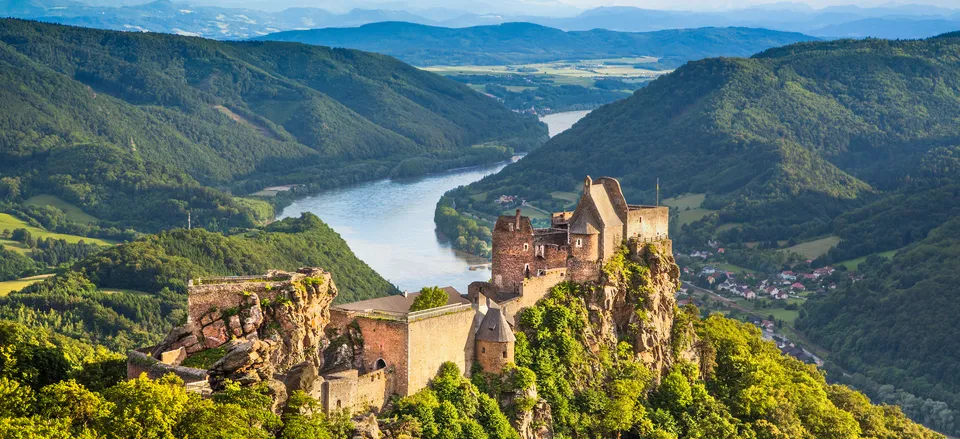
/https://tf-cmsv2-journeys-media.s3.amazonaws.com/filer/0c/8e/0c8e8c74-c845-459a-833c-e2a894a4628e/cze_prague_vltavarv_dt_l_42628509.jpg)
/https://tf-cmsv2-journeys-media.s3.amazonaws.com/filer/82/cd/82cd1d11-30db-48f5-a9ea-e94724bcd572/cze_prague_oldtownsq_ist_52545148_xlarge.jpg)
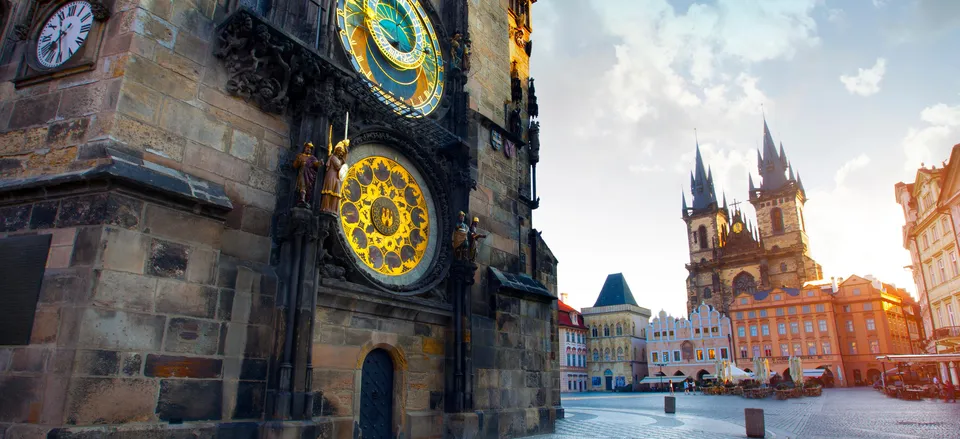
/https://tf-cmsv2-journeys-media.s3.amazonaws.com/filer/24/96/249619a4-9fc4-4236-a55d-0929e267ae7d/cze_prague_stvituscathedral_dt_m_3275593.jpg)
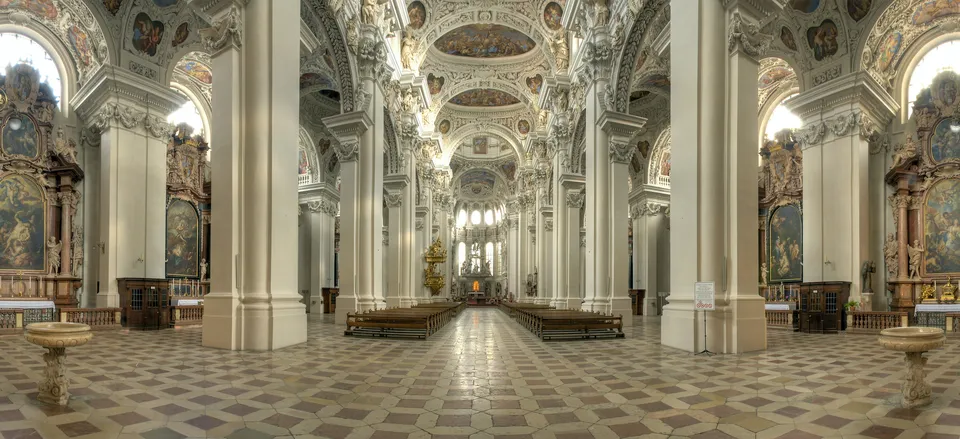
/https://tf-cmsv2-journeys-media.s3.amazonaws.com/filer/6a/f8/6af846db-6a02-43ca-b781-14c35ca2ff04/aut_melkabbey_danube_ss_1571583889.jpg)
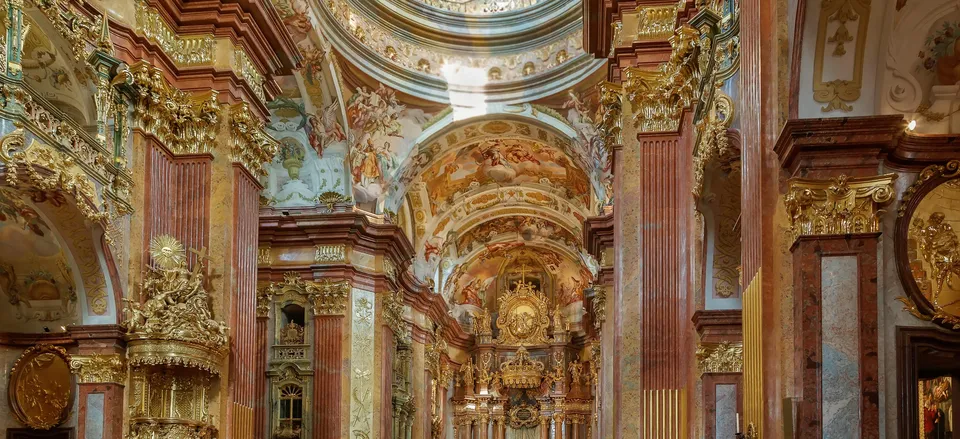
/https://tf-cmsv2-journeys-media.s3.amazonaws.com/filer/15/43/1543589f-d09c-418b-9380-aa89c1ae7746/aut_durnstein_danube_ist_656773716_web.gif)
/https://tf-cmsv2-journeys-media.s3.amazonaws.com/filer/94/47/9447586c-20ef-4fb2-818e-c3494cf273b1/aus_durnstein_wachauvalley_dt_l_25094152.jpg)
/https://tf-cmsv2-journeys-media.s3.amazonaws.com/filer/66/dc/66dc250b-30a5-448c-8ecd-8f70a63d4f29/aut_vienna_ststephenscathedral_ist_499122504.jpg)
/https://tf-cmsv2-journeys-media.s3.amazonaws.com/filer_public/c1/f8/c1f84113-47ad-4b64-a891-9760fe991fd2/aut_vienna_hofbergpalace_dtm_18491449.jpg)
/https://tf-cmsv2-journeys-media.s3.amazonaws.com/filer/fa/92/fa92f93a-ba13-42a8-a3e7-8f1ce9f9efb1/aut_vienna_schonbrunpalace_dtm_13016601.jpg)
/https://tf-cmsv2-journeys-media.s3.amazonaws.com/filer_public/b9/0e/b90eb4cc-0476-4bca-ba41-60667b8a7ce9/slv_bratislava_ss_1909118125.jpg)
/https://tf-cmsv2-journeys-media.s3.amazonaws.com/filer_public/ae/79/ae790fb3-a981-4ef5-9981-6e74807bb7ac/slv_bratislava_ss_725421652.jpg)
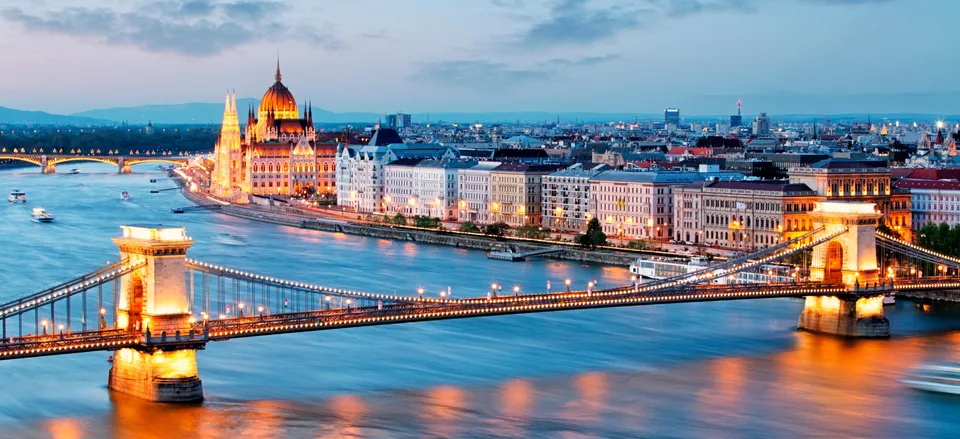
/https://tf-cmsv2-journeys-media.s3.amazonaws.com/filer_public/a9/b6/a9b6a60f-84f2-4fad-8b87-c7b7e7ce6ce3/hng_budapest_fishermansbastion_ss_1284286561.jpg)
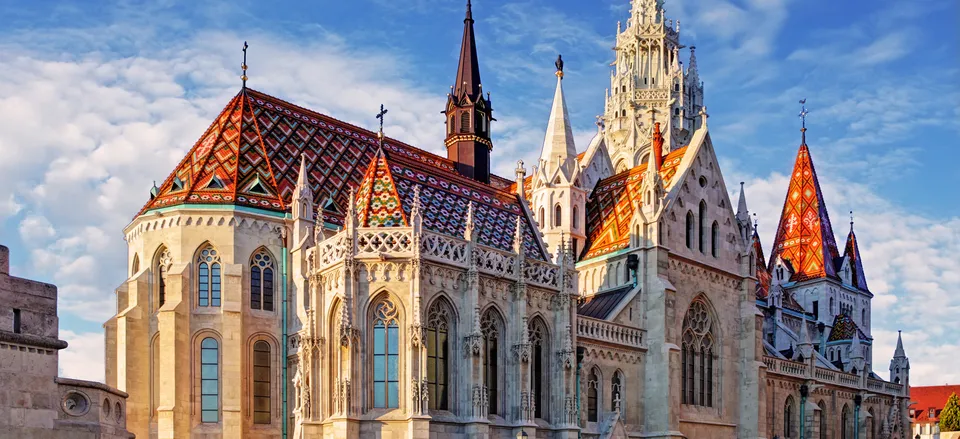
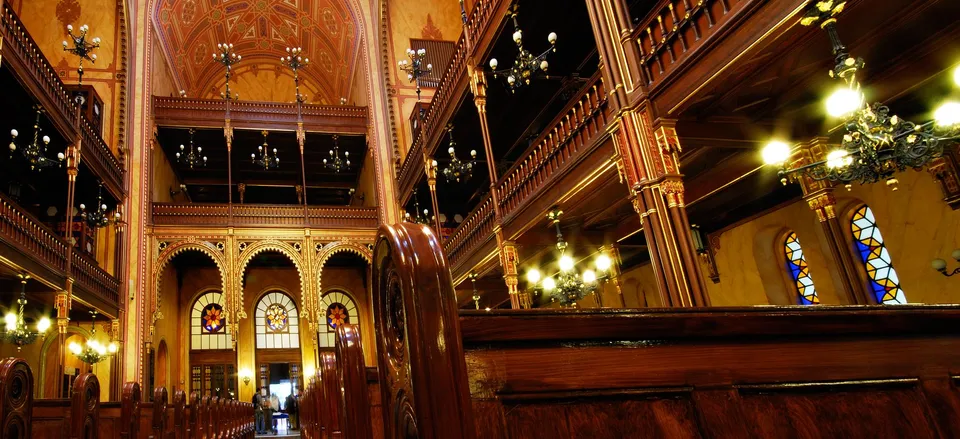
/https://tf-cmsv2-journeys-media.s3.amazonaws.com/filer_public/f4/3c/f43cb5b5-205b-4dde-baaf-2fb66bf89099/hng_budapes_greatmarkethall_ss_372378559.jpg)
/https://tf-cmsv2-journeys-media.s3.amazonaws.com/filer_public/a4/d1/a4d19072-7f52-4205-9480-ceca4c229123/hng_budapest_greatmarkethall_ss_411736480.jpg)
/https://tf-cmsv2-journeys-media.s3.amazonaws.com/filer_public/fe/a8/fea8abbc-d208-499c-8d79-675ad18acae6/srb_belgrade_ss_695817316.jpg)
/https://tf-cmsv2-journeys-media.s3.amazonaws.com/filer_public/6d/64/6d648f0c-633e-499b-96db-8db726ff4eb4/rom_irongategorge_mraconiamonastery_ss_2180030225.jpg)
/https://tf-cmsv2-journeys-media.s3.amazonaws.com/filer_public/af/42/af4206dd-e109-4369-a53a-4fe1a52a1261/rom_irongategorge_decebalhead_ss_627045617.jpg)
/https://tf-cmsv2-journeys-media.s3.amazonaws.com/filer_public/b3/1c/b31cc79b-9e6d-46af-a437-6b20a592d407/rom_irongategorge_golubacfortress_ss_1658984716.jpg)
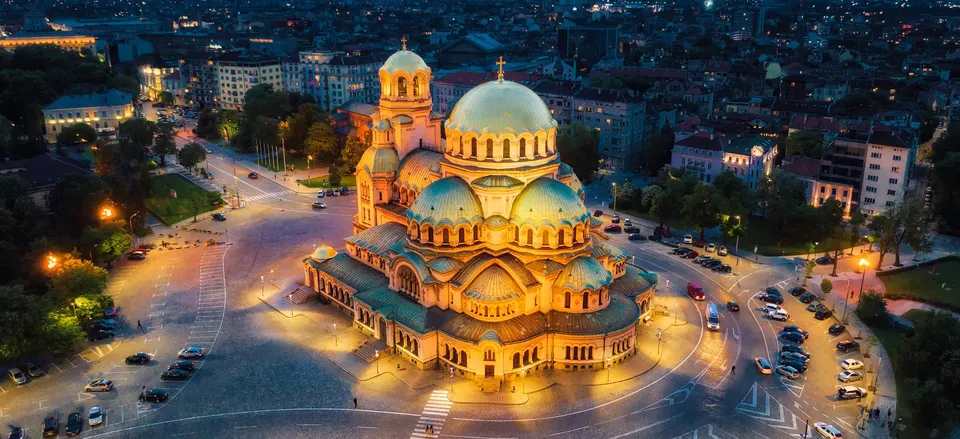
/https://tf-cmsv2-journeys-media.s3.amazonaws.com/filer/ab/c6/abc65949-155a-42f1-a856-8c22cd91a24a/nth_keukenhof_tulips_ist171211589.jpg)
:focal(1121x747:1122x748)/https://tf-cmsv2-journeys-media.s3.amazonaws.com/filer/ea/d6/ead605c2-f380-4c6c-b72d-7350eebc1e3b/pol_krakow_mainsq_ist_580115446.jpg)
/https://tf-cmsv2-journeys-media.s3.amazonaws.com/filer/a3/82/a382e79d-b5a2-4cff-8154-1a351c2ba373/aut_innsbruck_alps_dt_m_69061933.jpg)
:focal(1387x746:1388x747)/https://tf-cmsv2-journeys-media.s3.amazonaws.com/filer/d1/97/d1976afb-7d79-41b4-a374-2080b8c8c80b/fra_strasbourg_citycenterentranceholidays_dt_l_50620667.jpg)